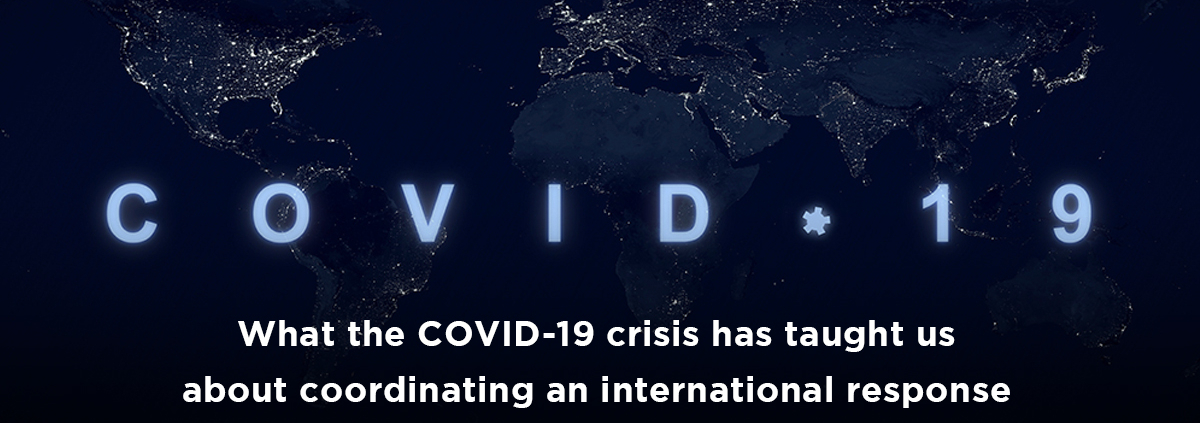The first official statement from the World Health Organization (WHO) regarding COVID-19 came in the first week of December, 2019. At the time, the epicenter of the novel Coronavirus was in Wuhan, China and it was business as usual for the rest of the world. Unperturbed, President Donald Trump made a much-anticipated two-day trip to India in late February, having downplayed the severity of COVID-19 to American media. In his defense, the virus had not manifested outside China then, and it wasn’t until 11th March that WHO declared COVID-19 a pandemic. Today, as I watch Prime Minister Narendra Modi make an appeal to his countrymen, seeking cooperation and mutual support, I cannot help but wonder how global leaders could have averted this crisis, if the lack of transparency hadn’t delayed early response and led to uncoordinated efforts.
Isolationism and protectionism — the story so far
Experts are drawing parallels between the 2003 SARS outbreak and COVID-19, in terms of genetic similarities, transmission type, symptoms, etc. However, unlike SARS, which impacted around 26 countries, COVID-19 has been recorded in over 170 countries. This level of widespread transmission is largely aided by the hyper-mobility and connectivity of our times. While the contagion was limited to the Hubei province, the Chinese government initiated a science-based, targeted response to mitigate the risk. However, I believe the Chunyun holiday period, which is celebrated with pomp and show in China, proved counterproductive to their efforts, resulting in regional transmission. Subsequently, COVID-19 transcended Chinese frontiers through outbound travelers, mostly at the end of the holiday season.
It is my understanding that, at that juncture, the virus could be contained if China or the WHO divulged the details and cautioned the international community. I recall a tweet from the latter in January, announcing the lack of clear evidence of COVID-19’s human-to-human transmission, citing the investigations conducted by Chinese authorities. This may have instilled complacency or a false sense of security among nations receiving visitors from China. Today, although I do not condone baseless allegations, after taking stock of the current pandemic situation, I can understand the frustration being directed towards world leaders and the accusations leveled against China – which range from obfuscation of information to under-reporting of cases.
We exist in the thick of globalization today where, similar to the UK’s reliance on India for paracetamol tablets, the entire world relies on China and the US for one thing or the other. China, being the largest beneficiary of globalization, is now supplying medical equipment to the Middle East and Europe. Even the US, the largest economy, is now facing massive shortages of medical equipment, after its free market policies weakened the supply chain and was further impacted by ongoing lockdowns. President Trump has now banned the export of protective gear, after Germany and France accused the US of seizing shipments containing masks, which were intended for them. Events such as this could soon serve as precursors to de-globalized supply chains and localized manufacturing. However, that alone will not suffice in the event of a future pandemic, along the same lines as COVID-19.
One world, one health
I ask myself if we could have dealt with this pandemic better and the answer is a resounding yes. However, and effective response takes more than good governance and a lifetime supply of masks. Within the context of COVID-19, some would even argue that Brexit, China’s authoritarianism, America’s isolationism and rising populism in Europe could have exacerbated the outbreak. Disconcerting developments have been noted in India, where the outbreak has sparked a border blockade between the states of Kerala and Karnataka, cutting off access to medical services.
Although this pandemic has triggered nationalist reflexes around the world, I believe the solution lies in turning outward and in cross-border coordination; we cannot turn inward, which we – naturally and understandably – are prone to, when faced with adversity. Standalone efforts can be tedious, along with high economic costs and casualty rates. In addition, such an approach betrays impoverished nations that cannot fend for themselves. Consolidated efforts, on the other hand, can lead to pooling of vital resources and cooperation among scientists, economists and policymakers. COVID-19, too, is resulting in delayed yet consequential consolidated efforts. Prime Minister Modi called upon SAARC nations to set up an emergency COVID-19 fund, which was well received and endorsed. The G-20, that represents two-thirds of the world’s population and 90 percent of global output, are yet to reach a clear consensus on a joint effort, but discussions are underway through virtual meetings. Even Israel and Palestinians have set up joint operations to combat the pandemic, which, I believe, may have implications that go farther than the pandemic.
Today, when we cannot envision a future other than a shared one, internationalism – not isolationism – holds greater promise. The deeply interconnected global economy requires multilateral efforts or it could plunge to a massive recession and food shortages, which would be catastrophic, to say the least. A synchronized global fiscal stimulus, along with coordinated vaccine/cure research efforts and sharing of resources, can accelerate the recuperation process and ensure preparedness for future events of this nature. The initial go-it-alone approach to tackling COVID-19 has backfired, leaving a precedent or two, which can help us forge a safer future for all.



